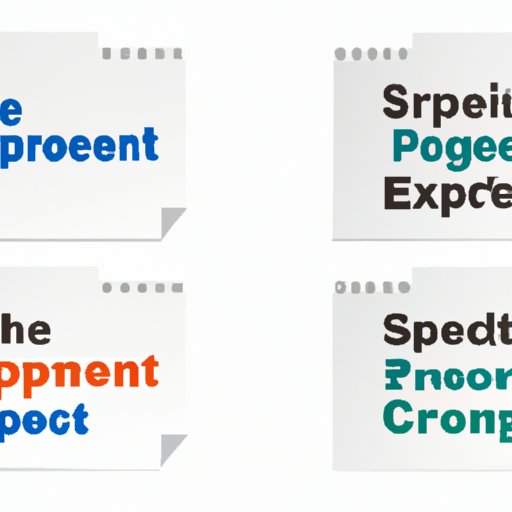
Introduction
Project management is the process of planning, executing, and controlling work undertaken to meet specific goals and objectives. Effective project management requires the ability to manage scope, or the boundaries of a project. This article is intended for project managers, team members, and stakeholders who want to learn more about scope in project management.

The Importance of Defining Scope in Project Management
Scope in project management is the work that needs to be done to deliver a product, service, or result with the specified features and functions. Defining scope involves clarifying the deliverables, boundaries, and requirements of the project. The scope statement is a critical component of project planning that forms the basis for project execution and control.
The benefits of defining scope are numerous, including improved communication and project clarity, increased stakeholder satisfaction, and reduced risks of project failure due to unclear objectives and requirements. In contrast, poorly defined scope can result in confusion, misunderstandings, and delays in completing the project.
Understanding Scope Creep and How to Avoid It
Scope creep happens when changes to the project’s scope are unauthorized or uncontrolled. Scope creep is a common issue that arises when project workers add new features, functions, or requirements in the absence of clear rules or procedures. Scope creep results in additional work, project delays, and cost overruns. To avoid scope creep, project managers must maintain clear communication with stakeholders and ensure that any changes in the scope are approved through a formal scope change process.
How to Develop a Proper Scope Statement for Your Project
The process for developing a scope statement begins with defining the project’s goals, objectives, and requirements. A scope statement should capture the project’s objectives, deliverables, assumptions, and constraints. It should also include a description of the project’s boundaries, stakeholder requirements, and acceptance criteria.
Developing a proper scope statement requires the involvement of key stakeholders, especially the project sponsor, the project manager, and the team members. Techniques such as brainstorming and mind mapping can be used to identify potential project deliverables, requirements, and constraints. A clear and concise scope statement can help mitigate scope creep and contribute to project success.
Scope Management Techniques to Keep Your Project on Track
Project managers use a range of techniques to manage scope throughout the project lifecycle. One critical success factor for scope management is effective change control. Change control involves tracking and controlling changes in project scope, schedule, or budget. Scope reviews and variance analysis can also be used to monitor project scope and identify any deviations from the baseline. Effective scope management requires regular project team meetings and stakeholder communication to ensure alignment and agreement on project goals and requirements.
Several examples of successful scope management in real-world projects demonstrate the importance of effective scope management for meeting project goals and stakeholder expectations.
The Relationship Between Scope and Project Success
The relationship between scope and project success is critical as it determines the project’s ability to meet its goals and objectives. Clear scope definition and management contribute to project success, whereas poorly defined scope can lead to scope creep, delays, and cost overruns. Project managers must define the project’s scope and manage it throughout the project’s lifecycle to ensure project goals are met and stakeholders’ expectations are fulfilled.
Several case studies demonstrate a strong correlation between scope management and project success. Studies show that projects with well-defined scope statements have a higher likelihood of success than those with unclear or poorly defined scope.
The Effects of Poor Scope Management on Project Budget and Timeline
Poor scope management can have significant negative effects on project budget and timeline, including cost overruns and schedule delays. Scope creep can lead to increased project costs and result in missed deadlines. While changes in project scope are sometimes necessary, approving unnecessary scope changes can negatively impact project performance. Project managers can avoid budget or timeline overruns by monitoring and controlling changes to project scope and ensuring that approved scope changes are effectively managed.
Scope Change Requests: When to Approve and When to Decline
The process for reviewing and approving scope change requests involves evaluating the impact of the proposed changes on the project’s budget, schedule, and scope. To determine whether to approve or decline a scope change request, the project manager must evaluate the request’s value and align it with the project’s goals and objectives. The main criterion for approving scope changes is the project’s business case, which outlines the financial benefits of the proposed changes.
Conclusion
Effective scope management is a critical success factor for project management. Project managers must define, develop, and manage the project’s scope throughout the project lifecycle. They should use a range of techniques, such as clear communication, effective change control, and regular team meetings, to ensure effective and successful scope management. By understanding scope in project management, project managers, team members, and stakeholders can contribute to project success and avoid the negative consequences of poorly defined scope.





